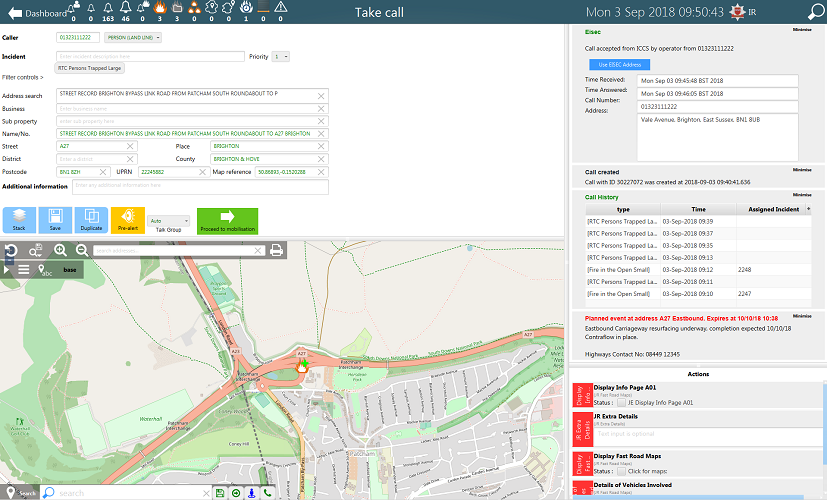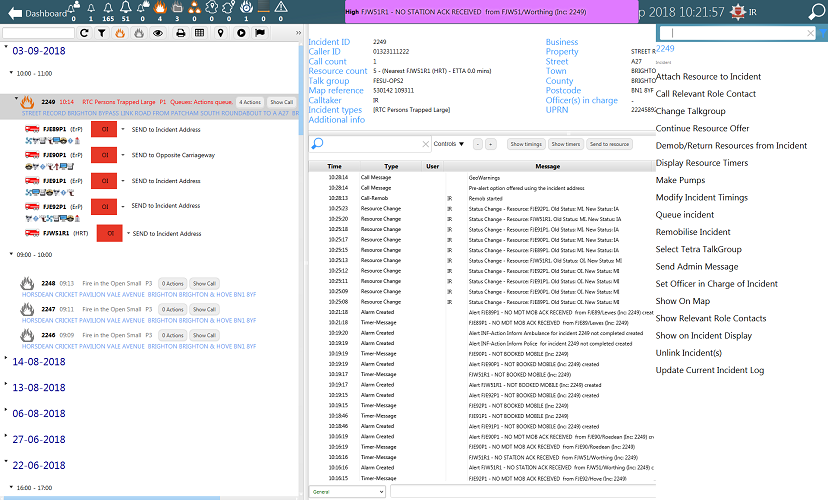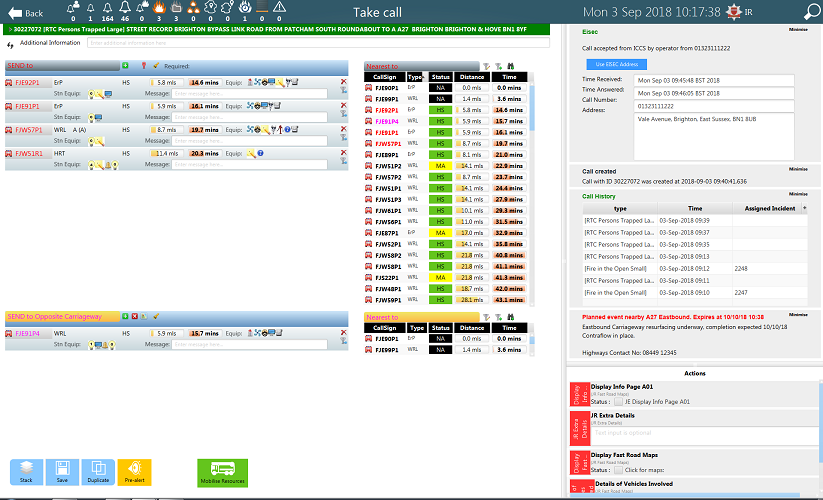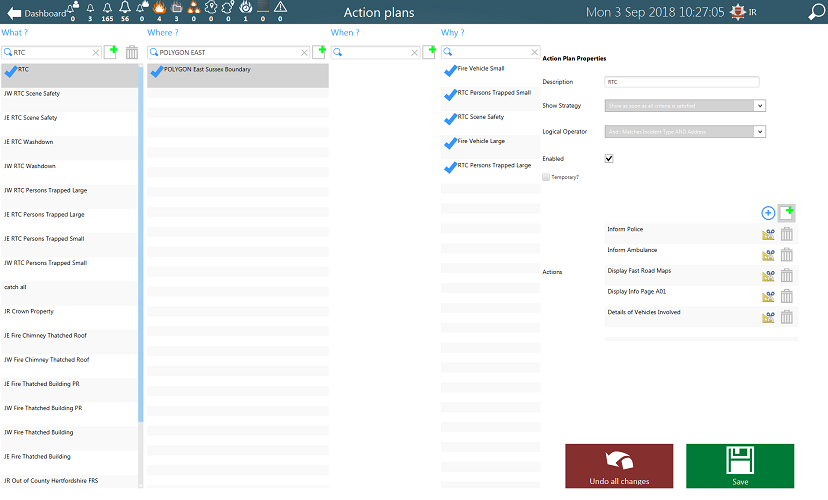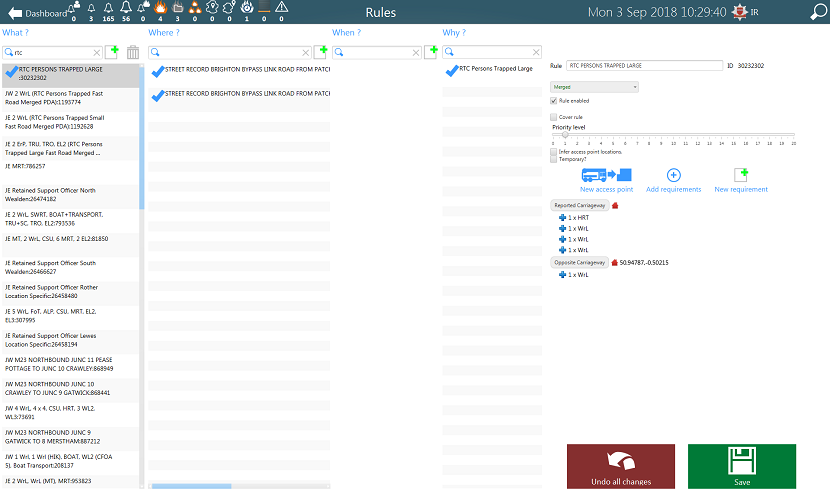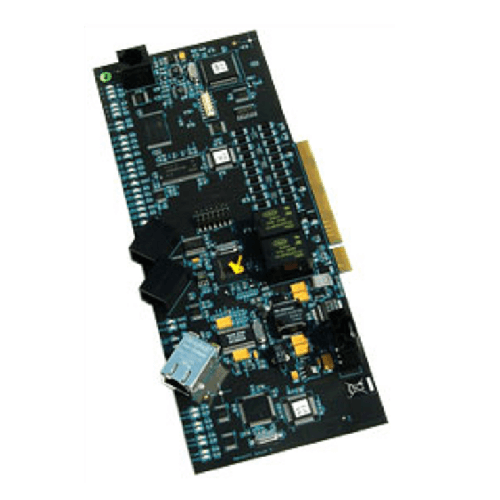Resque 4i brings a fresh approach to incident management, command and control, resource and resource attribute management that provides emergency fire services with increased economic and efficiency benefits, made available through sharing control centre resources and the provision of fall back ‘buddy’ arrangements, across multiple partner agencies, ensuring continued quality of service.
Emergency Services Incident Management
The Command and Control Room forms the nerve centre of the modern emergency service. As incidents increasingly become more complex, control centre operators have an ever greater need for a variety of up-to-date information to be immediately available. The capability of their incident management software has to keep pace with these needs, but without being over-complex for the user.
Fire Service Control Room Systems
When the Resque 4i command and control system has allocated all of the requisite resources, these need to be dispatched to the incident. Resources include fire-fighters, fire appliances, specialist equipment, senior fire officers and perhaps appliances from neighbouring Fire & Rescue Services. During this stage, the communications system plays a pivotal role in the overall incident handling procedure.
Transmission media within the Remsdaq system can be configured in several different ways. Wide Area Network (WAN) and Broadband can be used and connected separately to the operator positions in the control centre. These positions can also be connected to as many dialled bearers as the Fire & Rescue Service require, including the “back up” bearer.
If necessary, a Remsdaq Communications Processor can be installed. This is a path for many communications media, including radio and fixed bearers. Utilising a local area network (LAN), all of the operator positions can access the communication bearers available on the Communications Processor. This LAN is utilised to connect all operator positions and is also extended to encompass the communications processor.
Each operator position is directly connected to an intelligent PSTN/GSM modem and/or an ISDN Terminal Adapter and/or a Paknet Pad so that they remain fully functional mobilising units, with or without the LAN.
Private Wire FireNet Station End Equipment (SEE) are connected to the Communications Processor, which may be duplicated, at the Master Station. The Communications Processor continually polls SEE for events and handles the transmission of data to them via private wire. If a mobilisation requires any (or all) of the private wire SEE to be contacted, then the mobilising operator position will transmit a data packet across the Ethernet, to the Communications Processor.
In addition, the modular design of the Communications Processor means that a fault only affects part of the system, resulting in the oft quoted, though seldom achieved objective of ‘graceful degradation’. Fire & Rescue Service personnel are also able to undertake first-line maintenance, as the system is logically divided into easy to understand elements that can be replaced to rectify any faults that may occur.


